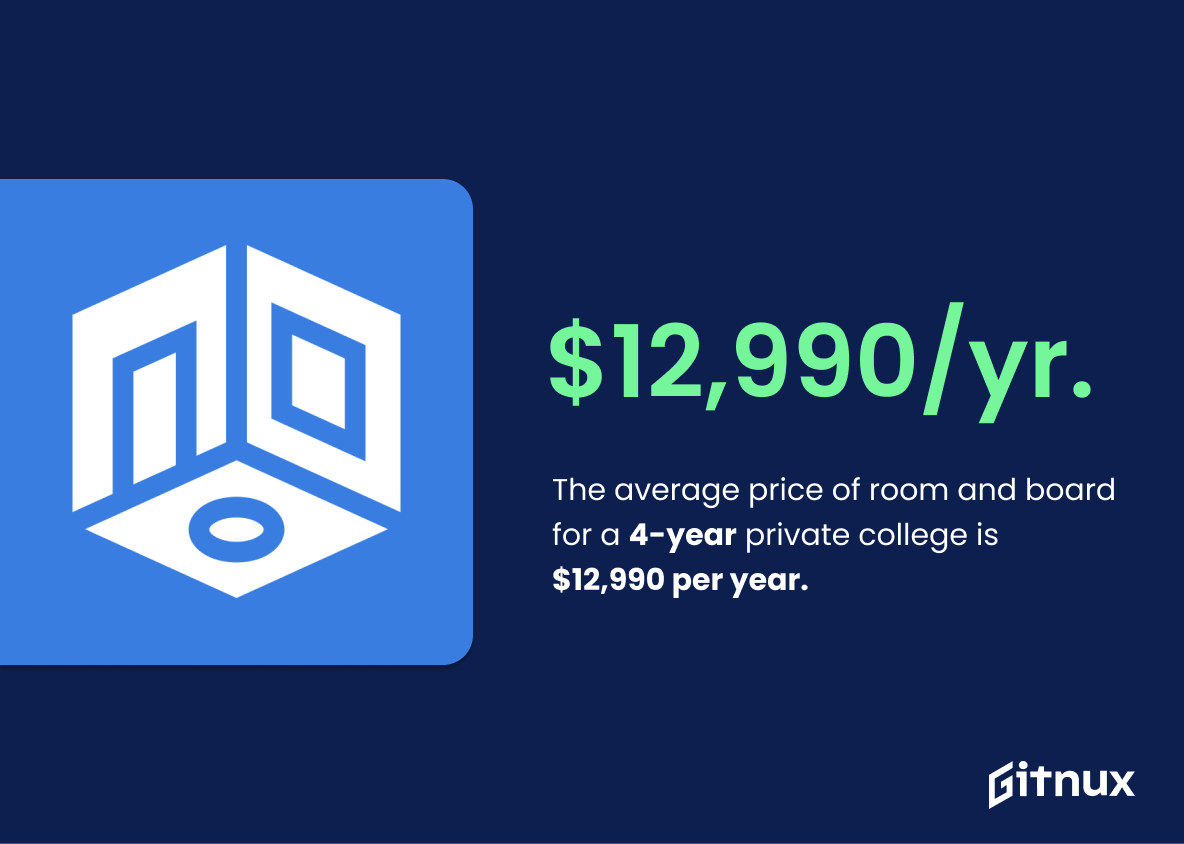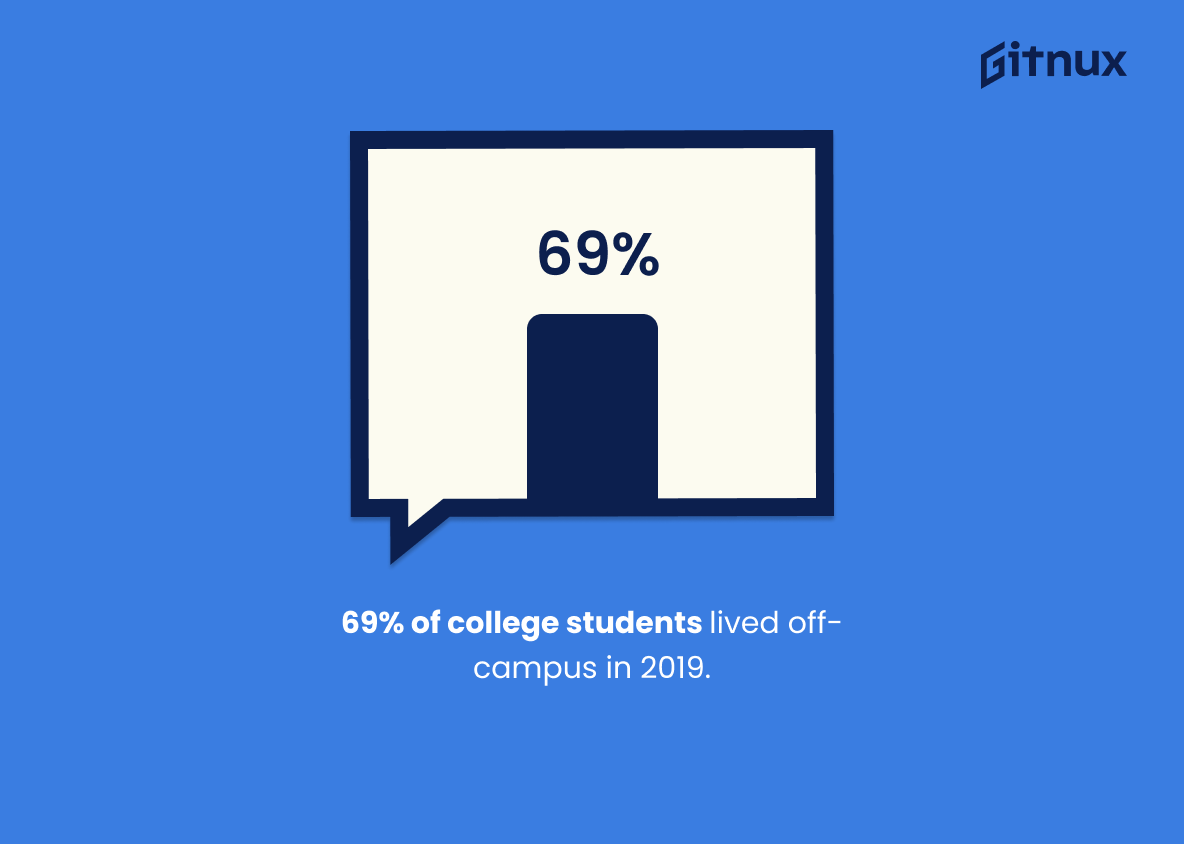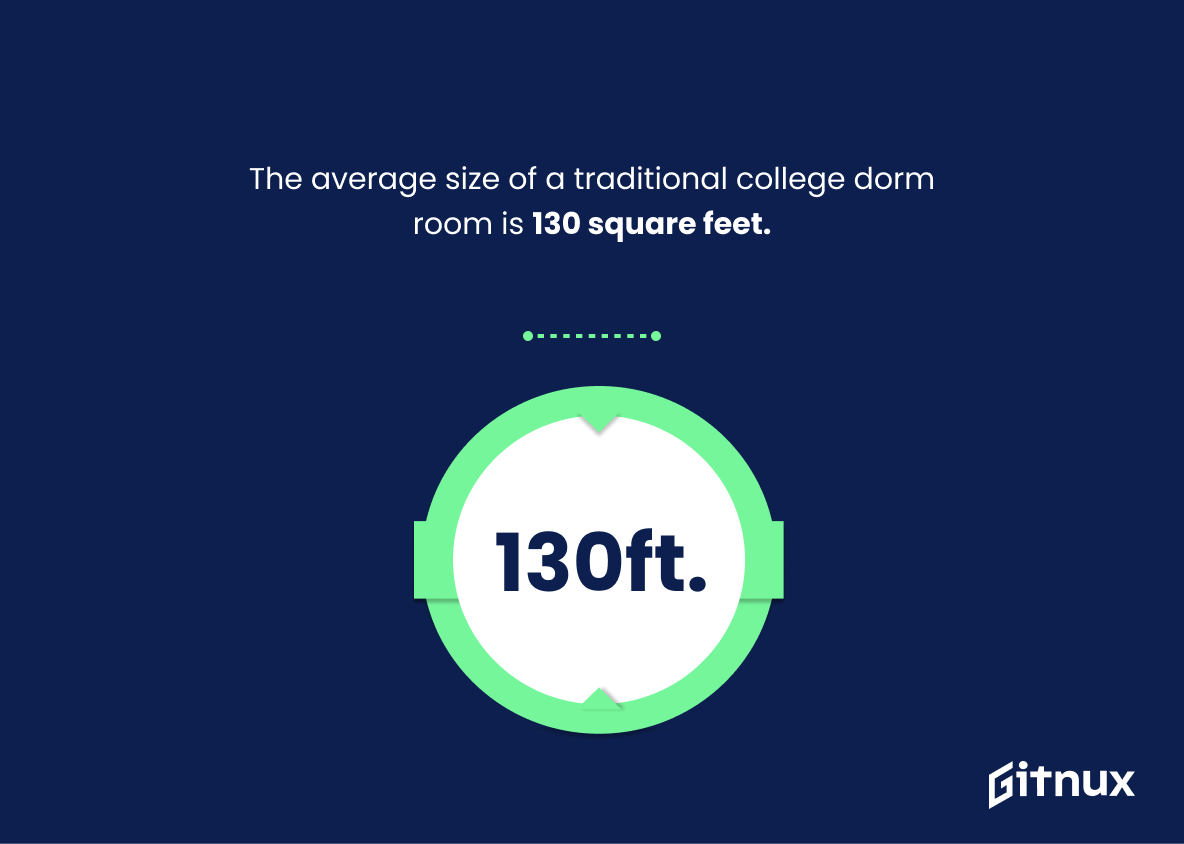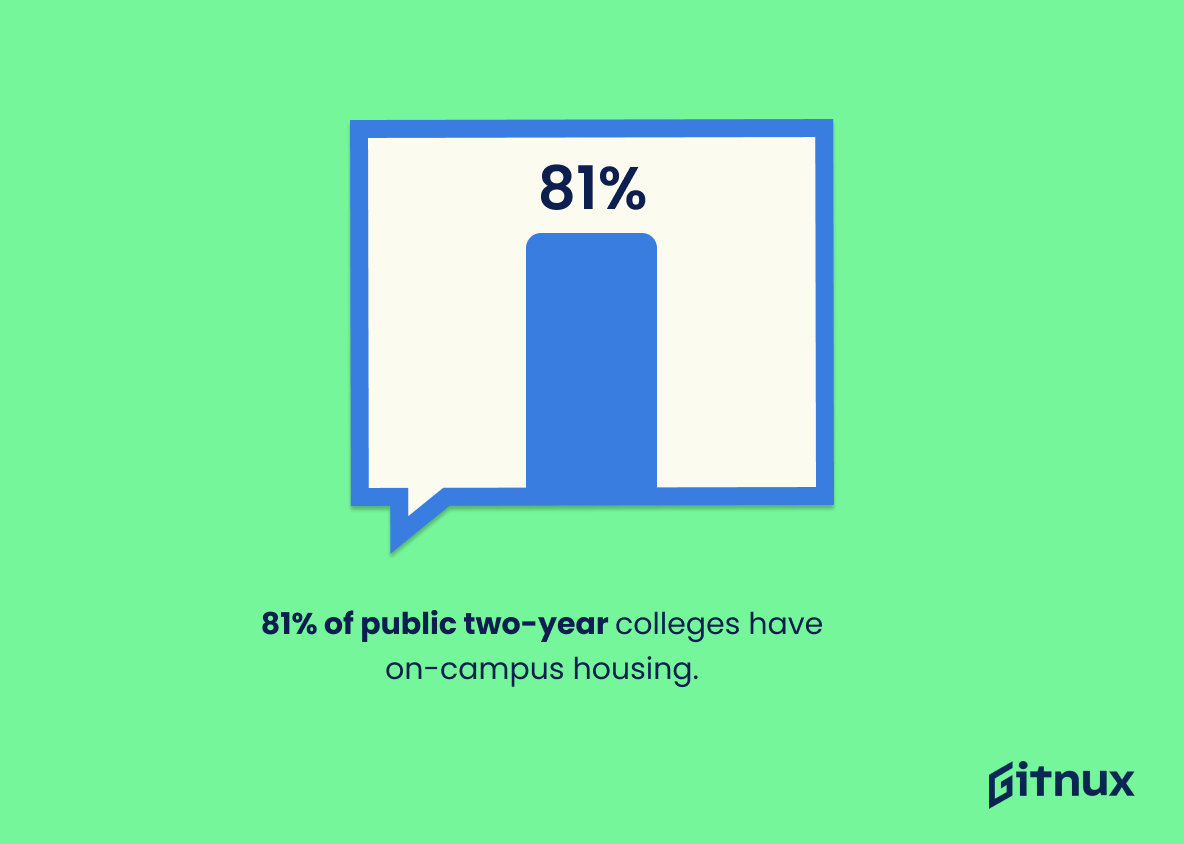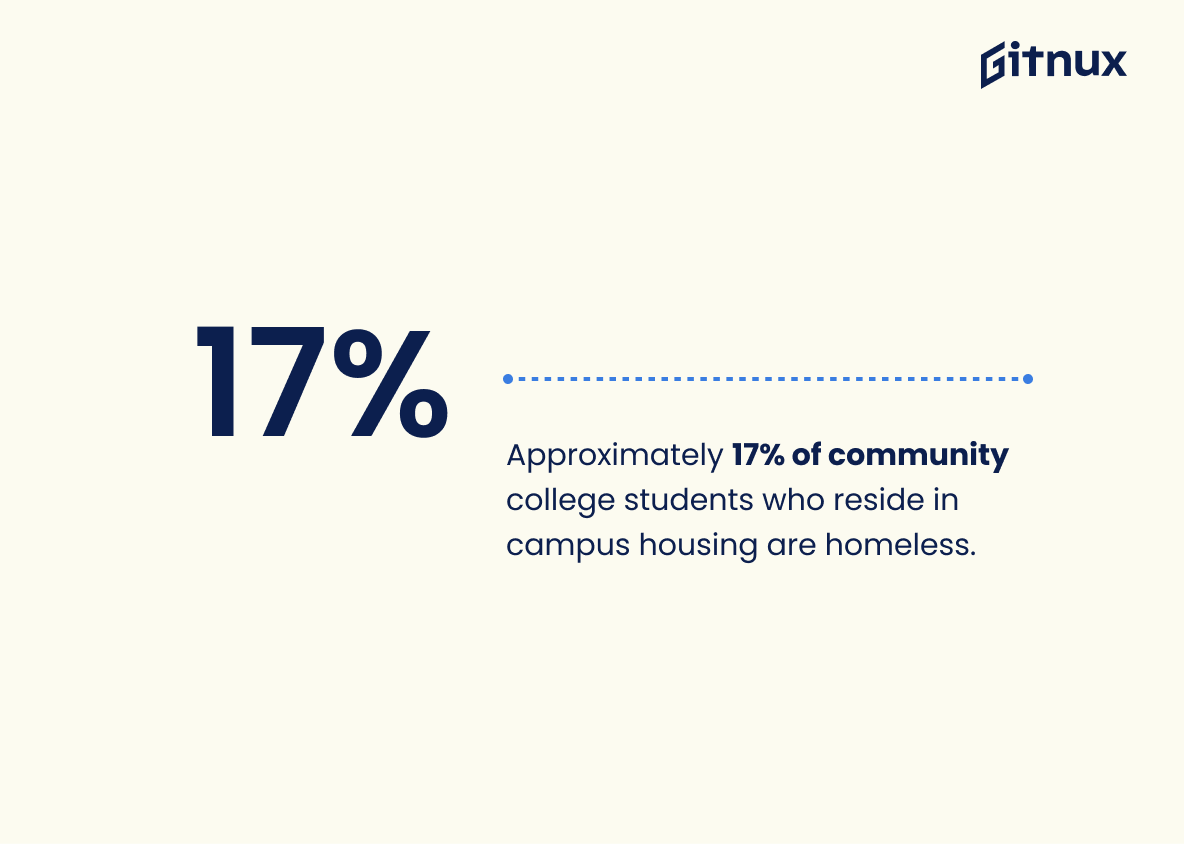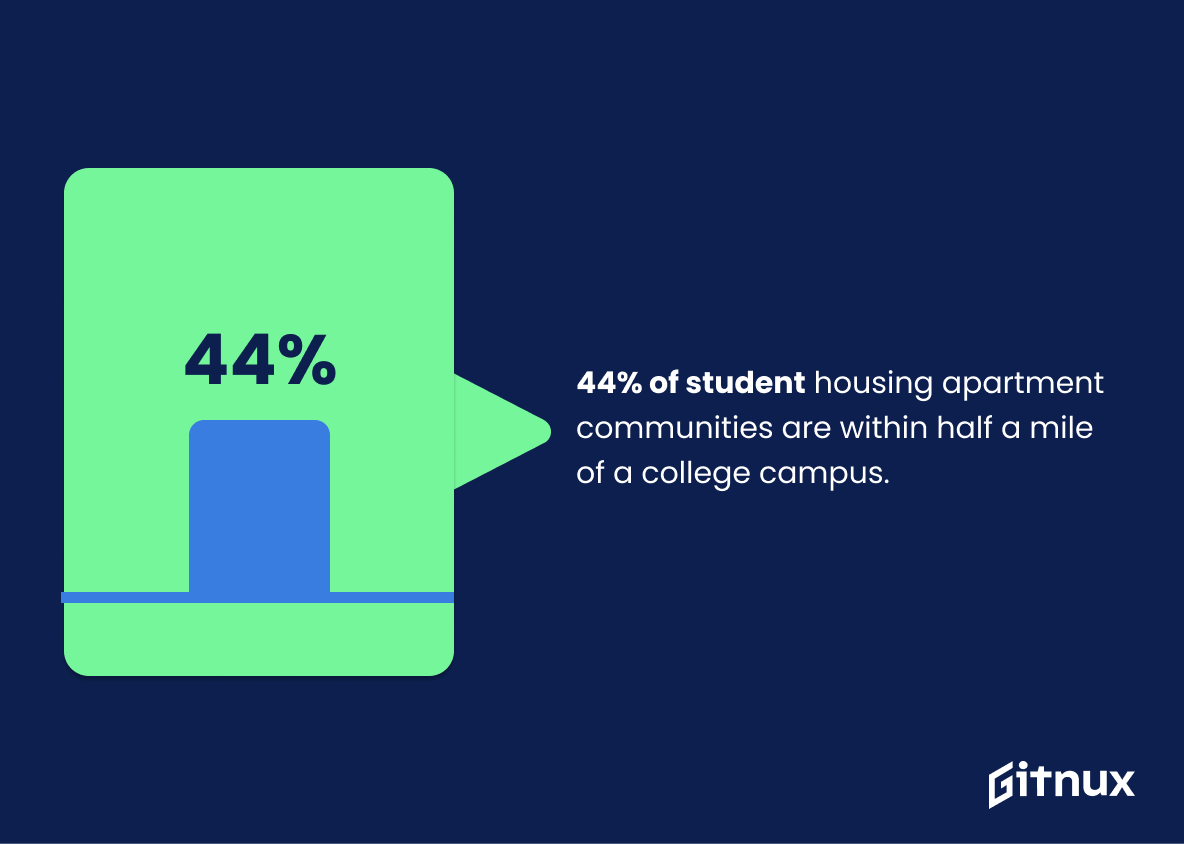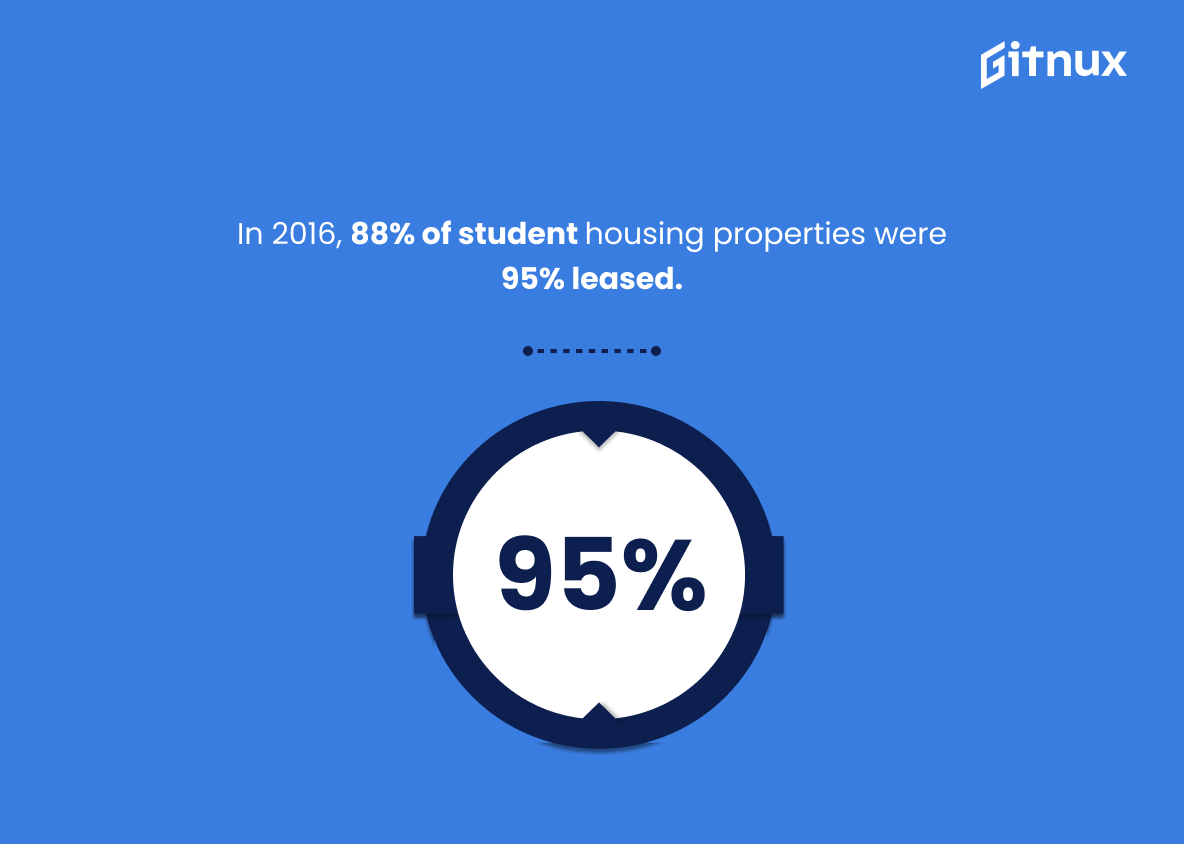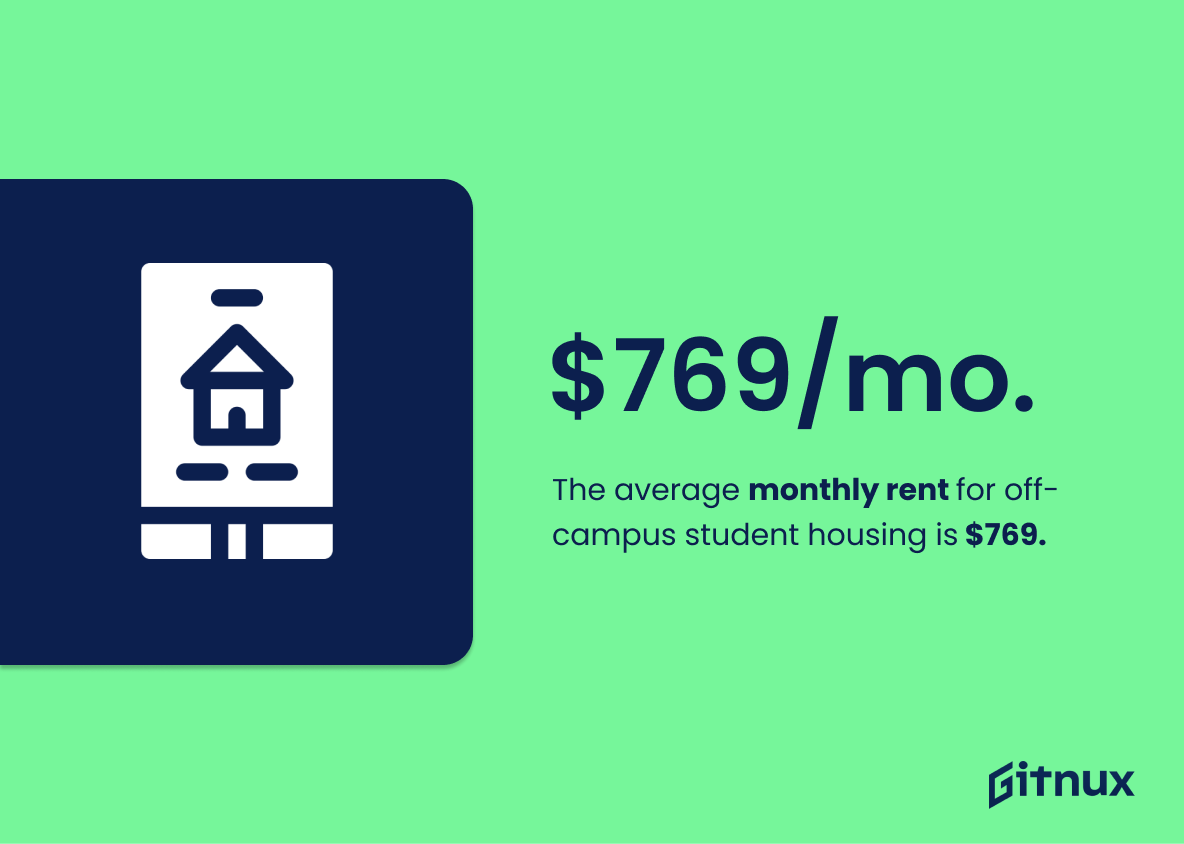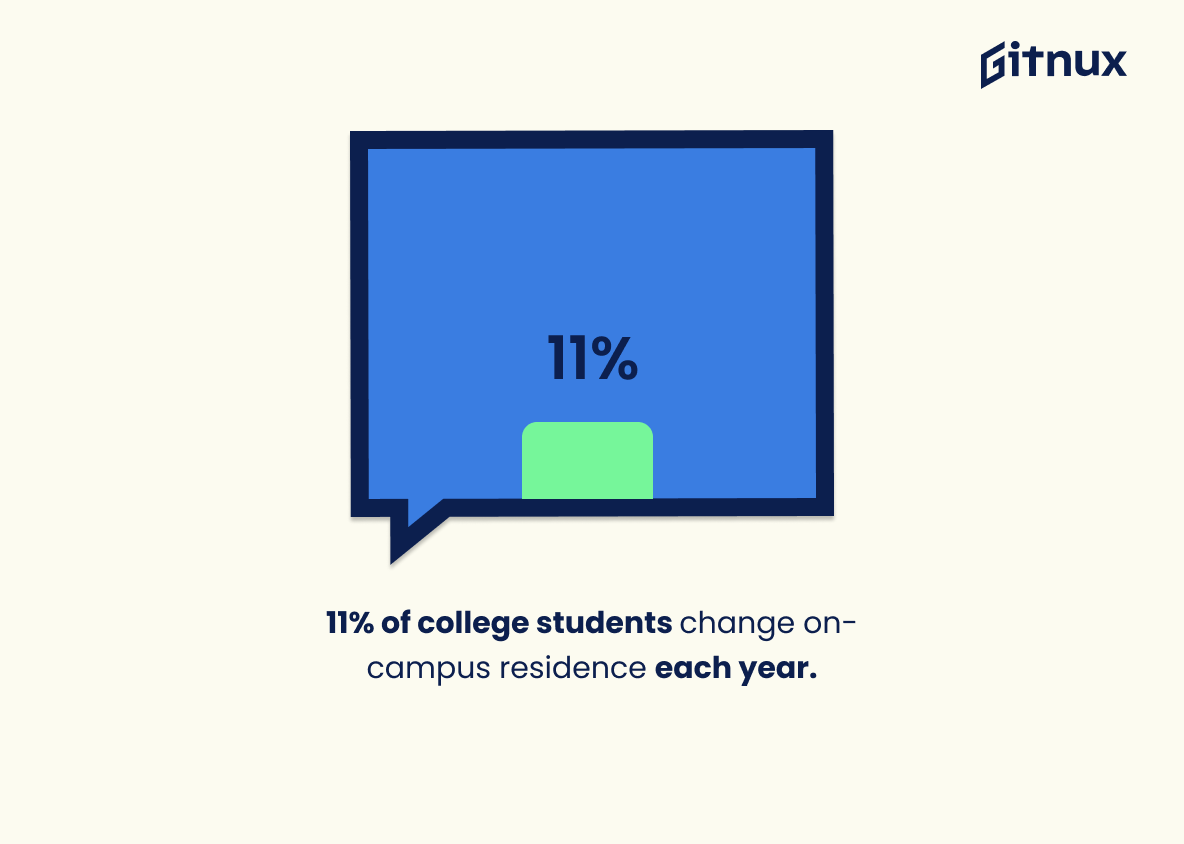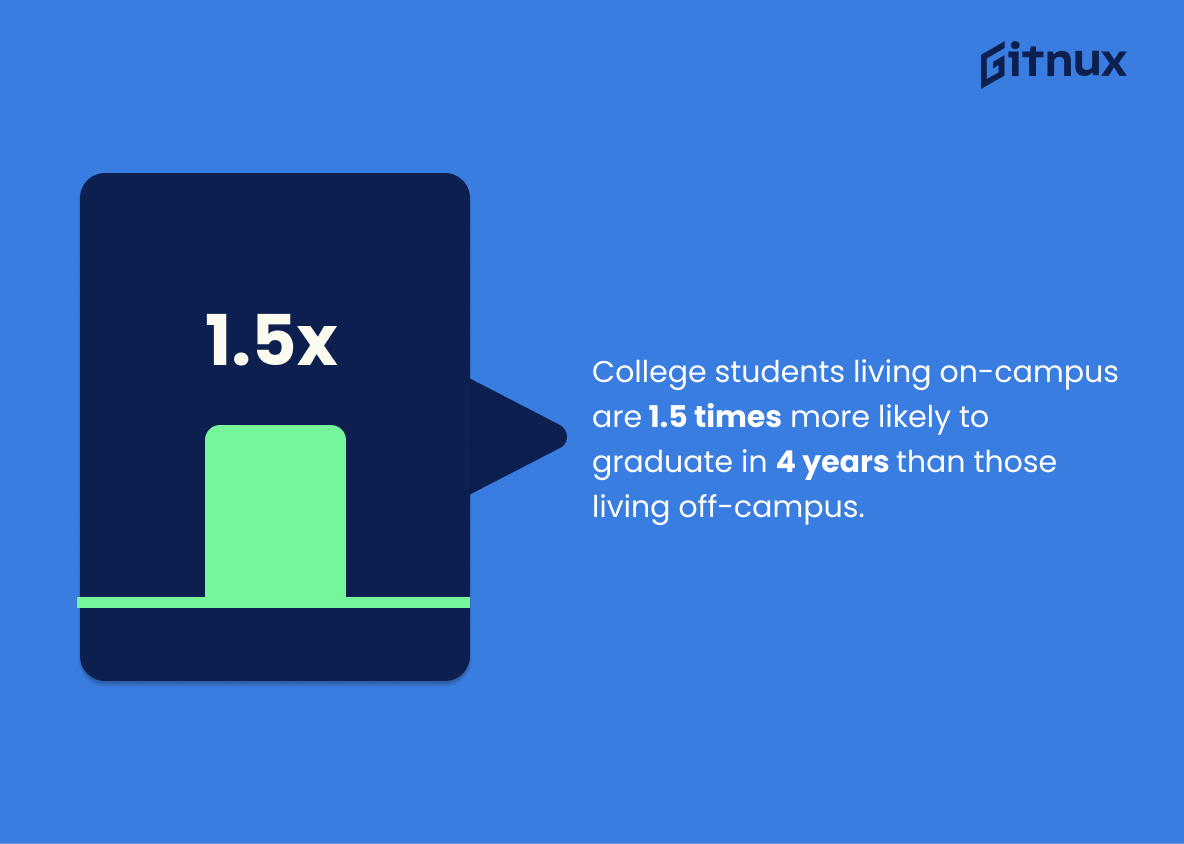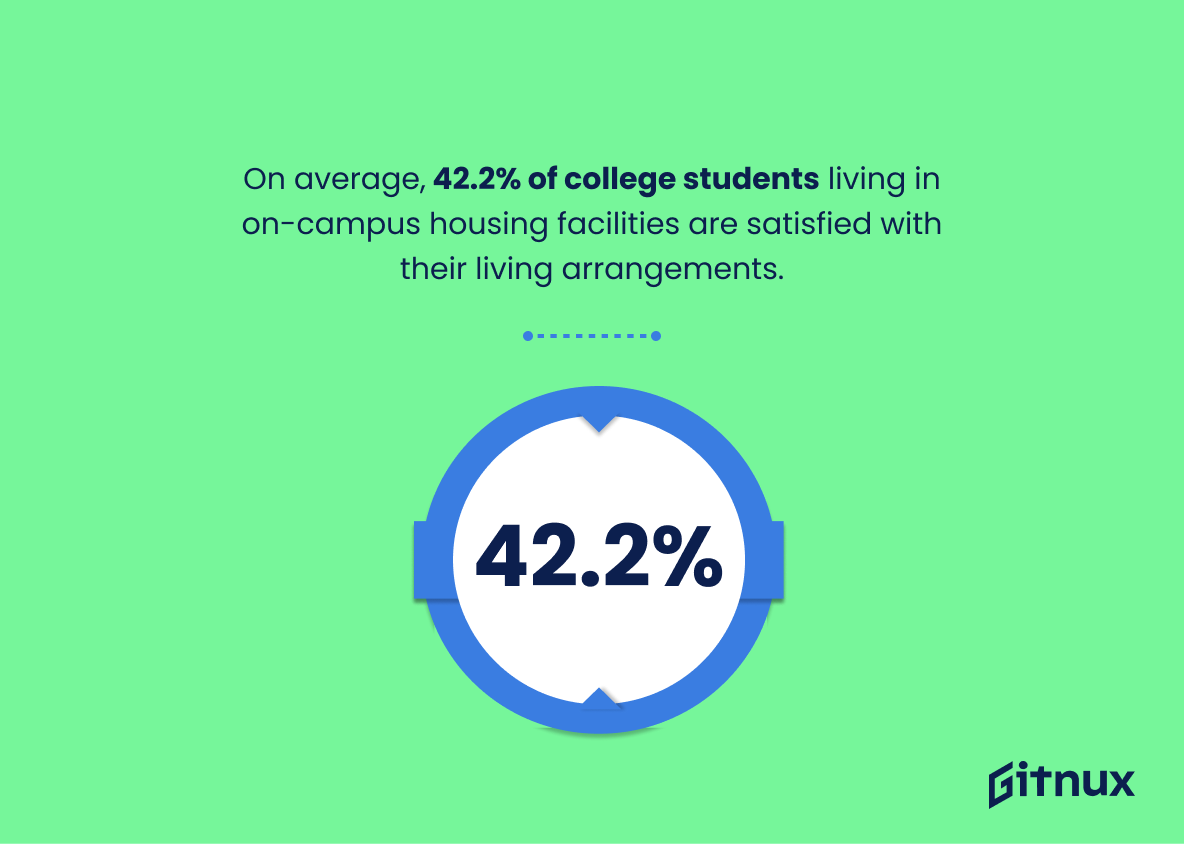College housing is an important part of the college experience for many students. From on-campus dorms to off-campus apartments, there are a variety of options available when it comes to finding a place to live while attending school. But what do we really know about college housing? How much does it cost? Who lives in campus housing and who lives off-campus? What kind of amenities are offered by different types of student living arrangements? In this blog post, we will explore these questions and more as we take a look at some interesting statistics related to college housing in the United States.
College Housing Statistics Overview
The average price of room and board for a four-year private college is $12,990 per year.
This statistic is a crucial piece of information when it comes to college housing statistics, as it provides insight into the cost of living for students attending a four-year private college. Knowing the average price of room and board can help students and their families plan for the financial commitment of attending college, and can also help them compare the cost of living at different schools.
69% of college students lived off-campus in 2019.
This statistic is significant in the context of college housing statistics because it provides insight into the living arrangements of college students. It indicates that the majority of college students are not living in on-campus housing, which could be due to a variety of factors such as cost, convenience, or preference. This statistic can be used to inform decisions about college housing policies and to better understand the needs of college students.
The percentage of students living off-campus without family increased from 30% to 37% between 2000 and 2019.
This statistic is indicative of a growing trend of college students living independently from their families. It suggests that more and more students are choosing to live off-campus without family support, likely due to the increased cost of living and the need for more independence. This is an important statistic to consider when discussing college housing statistics, as it provides insight into the changing landscape of college housing and the needs of college students.
50% of college students in the United States live on-campus.
This statistic is significant in the context of college housing statistics because it provides insight into the living arrangements of a large portion of college students in the United States. It is important to understand the living arrangements of college students in order to better understand the housing market and the needs of college students.
The average size of a traditional college dorm room is 130 square feet.
This statistic is an important indicator of the living conditions that college students face. It provides insight into the amount of space available to students in their dorms, and can help inform decisions about the type of housing that is best suited for their needs. Additionally, it can be used to compare the size of dorm rooms across different colleges and universities, allowing students to make more informed decisions about where to attend.
The average cost of a private room in a college dormitory is $6,000 to $7,500 per year.
This statistic is an important indicator of the cost of college housing, as it provides insight into the amount of money students must budget for their living expenses. It is especially relevant for those considering living in a private room in a college dormitory, as it gives them an idea of the financial commitment they must make. Furthermore, this statistic can be used to compare the cost of living in a college dormitory to other housing options, such as off-campus apartments or living with family.
81% of public two-year colleges have on-campus housing.
This statistic is significant in the context of college housing statistics because it demonstrates the prevalence of on-campus housing options available to students attending public two-year colleges. It highlights the fact that the majority of public two-year colleges provide students with the opportunity to live on campus, making it easier for them to access the resources and services available at the college.
Approximately 17% of community college students who reside in campus housing are homeless.
This statistic is a stark reminder of the reality that many college students face: homelessness. It highlights the need for more resources and support for community college students who are struggling to make ends meet and find stable housing. It also serves as a call to action for universities to provide more affordable housing options and support services for students in need.
44% of student housing apartment communities are within half a mile of a college campus.
This statistic is significant in the context of college housing statistics because it highlights the convenience of student housing for college students. Being within half a mile of a college campus means that students can easily access their classes, campus amenities, and other activities without having to worry about long commutes. This proximity to campus also allows students to save time and money on transportation costs.
In 2016, 88% of student housing properties were 95% leased.
This statistic is a testament to the high demand for student housing properties in 2016. It indicates that the majority of student housing properties were almost completely filled, suggesting that students were eager to find housing near their college campuses. This statistic is an important indicator of the popularity of student housing and the need for more housing options for college students.
The average monthly rent for off-campus student housing is $769.
This statistic is a key indicator of the cost of living for college students living off-campus. It provides insight into the financial burden of renting a place to live while attending college, and can help students make informed decisions about their housing options.
11% of college students change on-campus residence each year.
This statistic is an important indicator of the fluidity of college housing. It speaks to the rate of turnover in on-campus residences, and provides insight into the dynamics of the college housing market. It can be used to inform decisions about the availability of housing, the need for new housing, and the potential for increased occupancy rates. Additionally, it can be used to assess the effectiveness of housing policies and the satisfaction of students with their living arrangements.
38% of off-campus housing for college students includes roommate matching services.
This statistic is significant in the context of college housing statistics because it highlights the prevalence of roommate matching services in off-campus housing. This indicates that many students are taking advantage of these services to find compatible roommates, which can help to reduce stress and conflict in shared living spaces.
College students living on-campus are 1.5 times more likely to graduate in four years than those living off-campus.
This statistic is a powerful indicator of the importance of on-campus housing in helping college students reach their educational goals. It demonstrates that living on-campus can provide students with the resources and support they need to stay on track and graduate in four years. This is an important factor to consider when discussing college housing statistics, as it highlights the value of on-campus housing in helping students succeed.
On average, 42.2% of college students living in on-campus housing facilities are satisfied with their living arrangements.
This statistic is a testament to the fact that college students living in on-campus housing facilities are generally content with their living arrangements. It speaks to the quality of the housing options available to students and the overall satisfaction they experience. This is an important piece of information to consider when discussing college housing statistics, as it provides insight into the overall satisfaction of students living in on-campus housing.
The number of colleges offering gender-inclusive housing options increased by 34% between 2014 and 2018.
This statistic is a testament to the progress being made in college housing options. It shows that more and more colleges are recognizing the importance of providing gender-inclusive housing options, which is a positive step towards creating a more inclusive and equitable environment for all students.
Conclusion
Based on the statistics provided, it is clear that college housing options are varied and plentiful. Most colleges in the United States offer campus housing for students, with approximately 57% of those living on-campus being freshmen. The average price of room and board for a four-year public college is $11,510 per year while private colleges cost an average of $12,990 per year. While 69% of college students lived off-campus in 2019, 50% still live on-campus today. Additionally 72% of those residing in campus housing are female and 11% change their residence each year.
Furthermore 38 %of off-campus student housing includes roommate matching services to help ease transition into university life as well as increase graduation rates by 1.5 times compared to those who live off campus . Gender inclusive options have also increased significantly over recent years providing more choice than ever before when selecting accommodation at university level education institutions across America
References
0. – https://www.research.collegeboard.org
1. – https://www.collegeconsensus.com
2. – https://www.naiop.org
3. – https://www.communitycollegereview.com
4. – https://www.collegian.com
5. – https://www.sa.ua.edu
6. – https://www.pnas.org
7. – https://www.rentcollegepads.com
8. – https://www.axiometrics.com
9. – https://www.nces.ed.gov
10. – https://www.campuspride.org
11. – https://www.huduser.gov
12. – https://www.acenet.edu
13. – https://www.insidehighered.com
